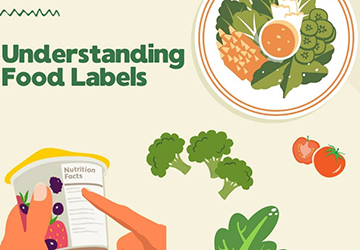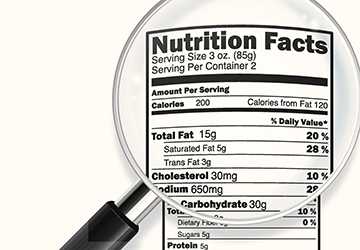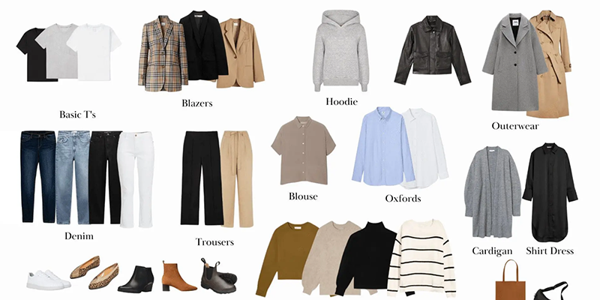Understanding Food Labels: Features to Look For / Features to Avoid
Have you ever wandered around the supermarket, reading the labels of the food products as if they were written in some foreign language? Today, determining what is hiding in the products we put on our plates is often challenging.
It's frustrating, right? However, the problem is that many of us need to learn what these labels mean, and as a result, we make decisions that could be more beneficial to our bodies. We can easily consume more sugar, bad fats, or artificial things without knowing it.

In this blog post, we'll discuss food labels in a manner that is easy to understand. By the end of the post, you will be comfortably able to decipher labels and know what to seek and shun.
Are you ready to have complete control over what you eat? Let's dive in.
Why It Is Essential to Know the Labels on Foods
Well, why go through all the trouble of reading those labels? It is beneficial to maintain good health or even prevent getting sick. Here's why:
First, it allows you to identify those instead of cunning, unhealthy ingredients that producers love to disguise. It also allows you to contrast one product with another and determine which is more beneficial for you.
Once one understands labels, one can make the right decision when choosing food to eat depending on their health needs.
Do you have allergies? Labels are your best friend when it comes to knowing what to avoid to prevent illness.
Finally, they help ensure one eats a balanced diet with all the nutrients the body requires. To sum up, reading labels empowers you to master your health!
1. Serving Size and Servings Per Container
Have you ever taken a snack and thought it was one serving but then realized later that you had taken two servings? That is why serving sizes are essential to grasp.
The label informs you what is considered one serving and how many servings are in the container. It is not about portion control but about being aware of your consumption.
If a package label indicates that a particular food has two servings and you consume the whole thing, you are duplicating all the figures on the label.
This applies to calories, fat, and sugar—to everything. So, the next time you enjoy your favourite snack, look at the serving size.
You might be shocked, and it will enable you to make better decisions concerning the amount you consume.
2. Calories
Calories are like the price tag for food's energy. They indicate the amount of power provided by one serving. However, do not fixate on this number as the sole figure.
It is helpful when planning a diet that can help shed some pounds, but more is needed to give the complete picture of foods' nutritional value.
Calories are still calories; two foods might have the same calories but very different nutritional values.
However, it is helpful to monitor calories to maintain energy balance. This number is essential if you aim to lose or gain weight or keep it off.
Oh, and it's not just about the quantity of calories consumed. A 100-calorie apple and a 100-calorie cookie are different for your body.
3. Nutrients to Look For
Some nutrients are your body's best friends, and food labels assist you in identifying them. First on the list is fibre; it positively impacts the gut's health and contributes to the feeling of satiety.

Try to get foods that are rich in fibre; your bowels will be glad you did. Next is protein, which is a vital nutrient that helps in the formation of muscles. It is not only for bodybuilders but everyone for repair and growth.
If you are physically active, try to choose options that contain protein. Finally, vitamins and minerals are the inconspicuous players in the diet. They support all the systems in your body, including the immune system and the bones.
4. Nutrients to Limit
Though certain nutrients are healthy, others are considered healthy in small proportions. In this particular case, saturated and trans fats are the villains. They are related to heart disease; thus, they should be kept to a minimum.
Avoid foods with high sodium content, especially those packed with sodium. Finally, be careful of additional sugars that are often added to food.
It is a sneaky nutrient that lurks in many processed foods and can lead to weight gain and type 2 diabetes.
Sucrose, glucose, and fructose in fruits are acceptable, while those added to food are unhealthy. You are doing your health a big favour by watching these.
5. Ingredients List
The ingredients list is where the detective does all the actual work. It is a list of everything in your food, in order of the weight of the ingredients. The first item is what there is most of, and the last is what there is least of. This list can be pretty shocking.
Try to find foods you are familiar with – if it sounds like something you'd find in a chemistry book, then probably avoid it. A shorter list usually (though not necessarily) also means a list with fewer processed foods.
Be careful with hidden sugar words, such as 'high fructose corn syrup' or any word with '-ose' at the end. If you suffer from allergies, this list is your BFF. It assists you in eliminating undesirable components.
The fewer ingredients there are, the better it is.
Conclusion
Are you all set to become a master of food labels? Now that you have learned all these things, it is time to begin applying what you have learned. The next time you go shopping, take it easy a little.
Take that cereal box or pack of snacks you have and take a closer look at the label. Look at the serving size, look for those nutrients mentioned earlier, and glance at the ingredients.
You might feel uncomfortable initially, but it is easier than it seems, especially if you do it frequently. In no time, you'll be effortlessly whizzing up and down the aisles, making the right decision.
Remember, every label you read is a step towards a healthier you. Your body will thank you for it.











